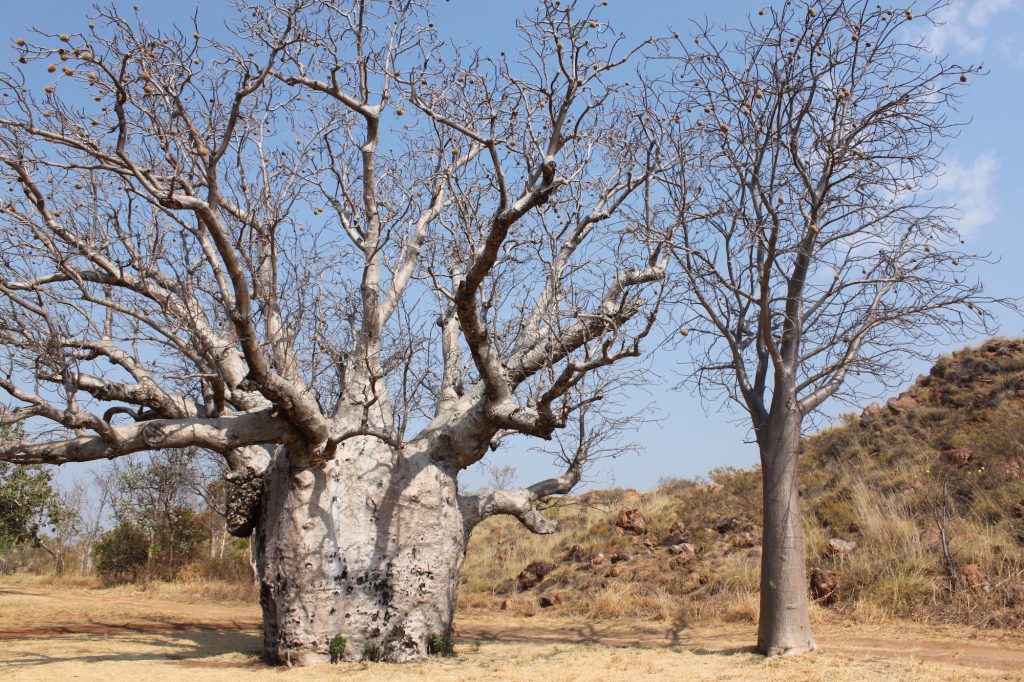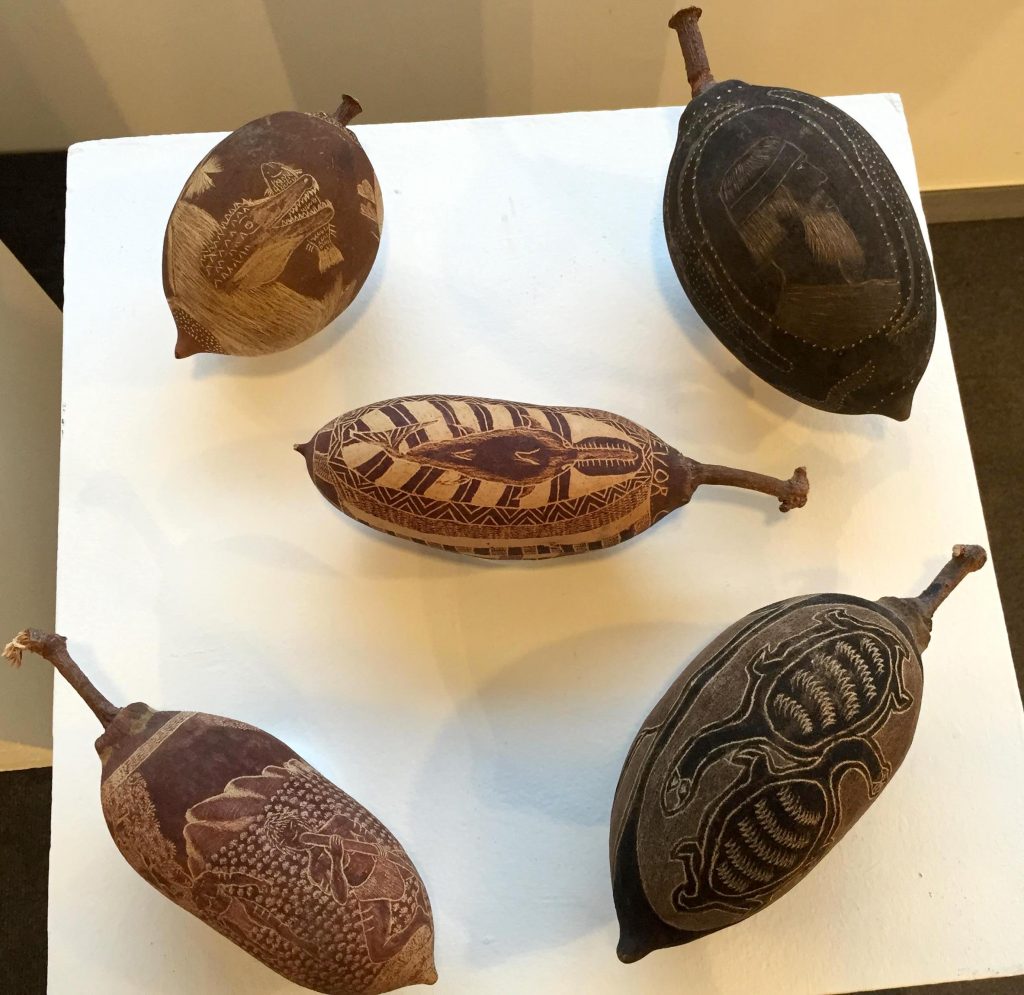Boab nut carving is a tradition that the Indigenous people from the Kimberley have been practising for many years. Boab nuts were probably carved as gifts and exchange items before Europeans settled in the north Kimberley but this is open to debate. They are difficult items to date. The naturalist Saville Kent in 1897 and Basedow in 1916 described and photographed engraved boab nuts from the west Kimberley.
The decorating by painting or engraving (carving) of boab nuts, is as an art form unique to the Kimberley. In 1897 the biologist Saville-Kent noted that boab nuts were engraved with rectangular designs similar to those found on wooden and pearl shell artefacts from the region. By the time anthropologist McCaffrey was in the Kimberley, boab nuts were carved in a range of styles that included the traditional geometric and traditional figurative modes as well as an advanced naturalistic style.
They are collected in April and May, when the shell is beginning to dry and harden. After that they begin to crack and can’t be used for carving. The nut is first rubbed in the sand to remove the outer layer of fur, revealing the brownish harder shell. Using a sharp object the softer brown slightly furry skin of the nut is scraped away, in the manner of a linocut, revealing layers of the creamy hard shell beneath. Experienced community carvers can often recognize what tool was used and who carved a particular nut from the style of the movements as well as the images or symbols. Artists only carve what they are permitted to carve through their culture.

